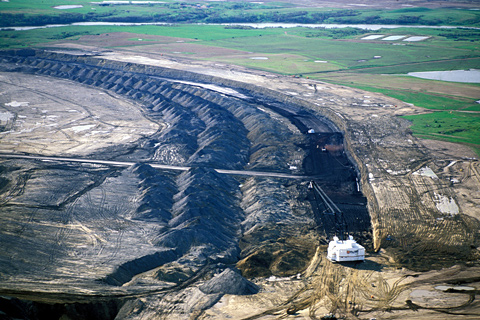By the end of the eighteenth century, forests on the Atlantic seaboard, where most Americans lived, were rapidly being used up. However, in places where coal could be picked out of embankments or shallow caves, people came to prefer it for domestic fuel and light, “the blaze being so brilliant,” as one traveler remarked, “as to supersede the use of candles, even for sewing.”
Obedient to President Jefferson’s orders, the captains noted the presence of “pitcoal,” or “carbonated wood,” wherever they saw it—or fancied they saw it, since neither explorer was well-educated in the new science of mineralogy. Just two days after leaving Fort Mandan in April 1805, they began noticing coal in the Missouri’s banks, and later Clark found lots of it on his trip down the Yellowstone River, starting a little below Pompeys Pillar. They had no reason to suspect they were looking at cross-sections of one of the largest low-sulfur lignite coal beds in the world. Geologists began mapping the bed in the late 1850s, naming it the Fort Union Formation. They found that it covered a massive area in parts of Montana, Wyoming, North Dakota, South Dakota, and Saskatchewan.
Lewis and Clark could never have imagined a pit like the one in this photograph. Opened in 1997, it is about twelve miles east of the Missouri River and sixty miles north of Bismarck, North Dakota. In the background is a post-glacial tarn called Coal Lake.
From Discovering Lewis & Clark from the Air
Photography by Jim Wark
Text by Joseph Mussulman
Reproduced by permission of Mountain Press
Experience the Lewis and Clark Trail
The Lewis and Clark Trail Experience—our sister site at lewisandclark.travel—connects the world to people and places on the Lewis and Clark Trail.
Discover More
- The Lewis and Clark Expedition: Day by Day by Gary E. Moulton (University of Nebraska Press, 2018). The story in prose, 14 May 1804–23 September 1806.
- The Lewis and Clark Journals: An American Epic of Discovery (abridged) by Gary E. Moulton (University of Nebraska Press, 2003). Selected journal excerpts, 14 May 1804–23 September 1806.
- The Lewis and Clark Journals. by Gary E. Moulton (University of Nebraska Press, 1983–2001). The complete story in 13 volumes.


